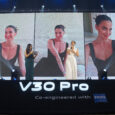Photography Techniques: When To Break The “Rule Of Thirds”
Ever feel like following photography techniques, like the rule of thirds, is very constricting? Don’t you wish you knew when you could break these photography techniques? If so, then here are some tips on when you can break the popular “rule of thirds“.
I use the rule of thirds a lot when composing my shots because it gives a sense of a “perfect fit” between the subject and the background. Before diving any further into this, though, let me explain the rule of thirds to begin with:
Photography Techniques: What is the Rule of Thirds?
The picture above shows the grid lines for the rule of thirds. Notice how the subject (the Chinese temple) is close to where the two lines intersect. The points where the lines intersect are the power points. (You can see these grid lines on your phone cam or digicams by activating the grid lines in the camera settings.)
Putting your subject (the one you’re taking a picture of) on or near these power points will give the photo a much more harmonized composition. Simple, isn’t it?
Now that we know what the rule of thirds is, let’s figure out when to break the rule:
This picture, on the other hand, shows how an eye-catching subject can grab the attention of the viewer by putting it at the center of the frame rather than on the side.
This is very helpful if you’re looking for a dramatic photograph, emphasizing on the subject rather than the background and works well with portrait shots. However, you don’t need a plain background to put the subject in the center of the shot, as long as the subject stands out from the background (like how that bold line stands out in the entire paragraph) it should give the same compelling result.
So, if you’re an aspiring photographer or are just looking to get some awesome snapshots of your vacation this summer break, then keep these photography techniques in mind. With just a little bit of practice, you’ll be good to go!








